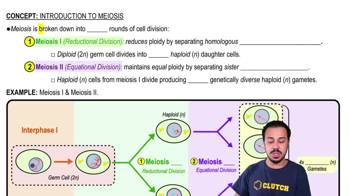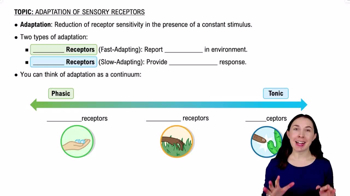Here are the essential concepts you must grasp in order to answer the question correctly.
Meiosis Stages
Meiosis consists of two sequential divisions: meiosis I and meiosis II, each with distinct phases. In meiosis I, homologous chromosomes are separated, while meiosis II separates sister chromatids. Understanding these stages is crucial for matching the phases with their descriptions.
Recommended video:
Homologous Chromosomes
Homologous chromosomes are pairs of chromosomes, one inherited from each parent, that are similar in shape, size, and genetic content. During meiosis I, these chromosomes undergo processes like crossing over and independent assortment, which are essential for genetic diversity.
Recommended video:
Law of Independent Assortment
Chromosome Behavior
The behavior of chromosomes during meiosis includes processes such as alignment at the metaphase plate, separation during anaphase, and the formation of new nuclei in telophase. Recognizing how chromosomes behave in each phase helps in accurately matching the phases with their corresponding descriptions.
Recommended video:
 Verified step by step guidance
Verified step by step guidance Verified video answer for a similar problem:
Verified video answer for a similar problem:

